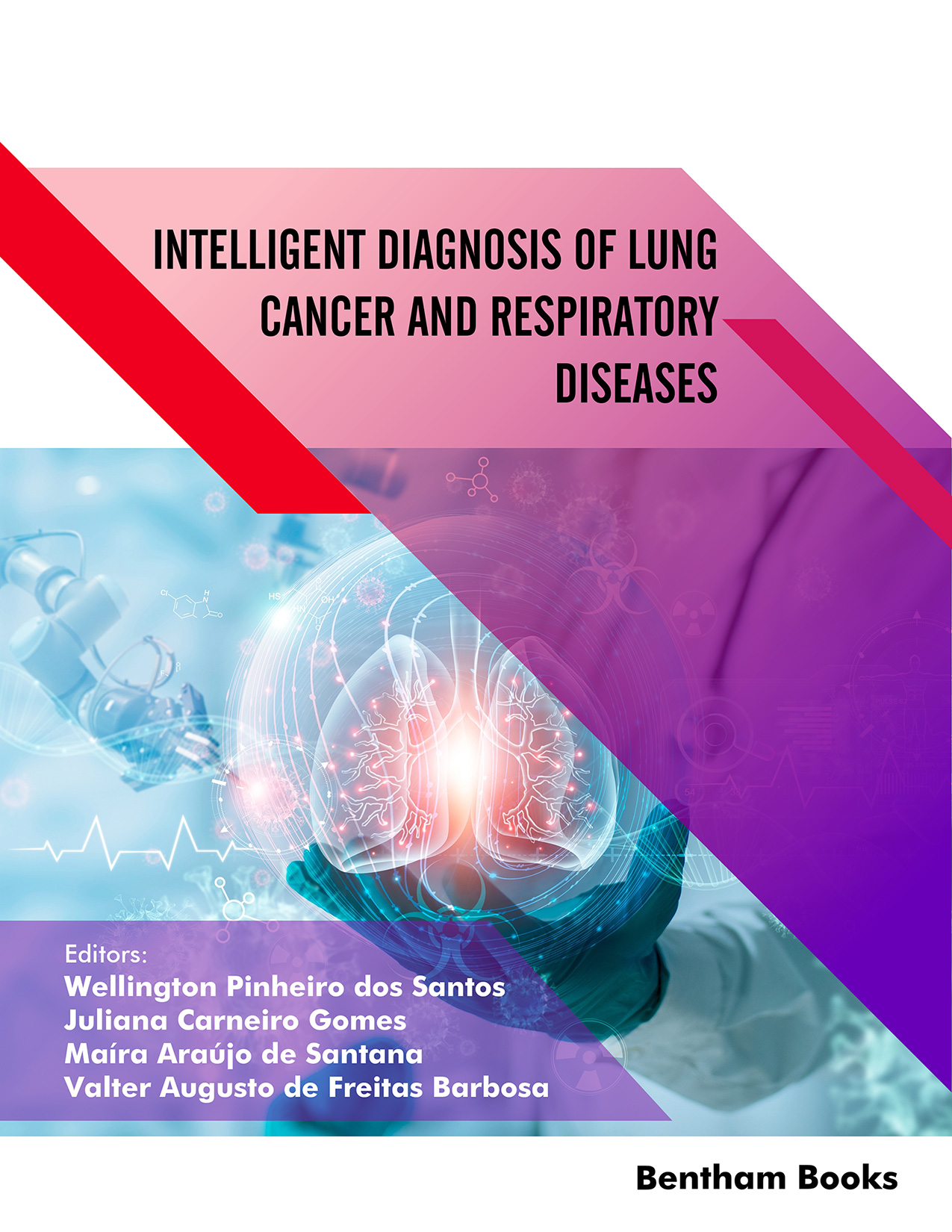This series of books, “Intelligent Systems in Radiology”, aims to present the principles and advances of diagnostic techniques in Radiology based on Artificial Intelligence, from the perspective of the advent of Digital Health. The series consists of three books. Each of them is based on two pillars: one dedicated to theoretical foundations and the other to radiological applications in the real world.
This first book, “Intelligent Diagnosis of Lung Cancer and Respiratory Diseases”, is dedicated to the diagnosis of diseases of the respiratory tract or those that seriously affect the respiratory system. The physiological foundations of the respiratory system and the formation of radiographic images and x-ray computed tomography are presented. Principles of respiratory diseases are also presented, including lung cancer, viral and bacterial pneumonia, tuberculosis, and Covid-19. In addition, the principles of pattern recognition and machine learning and the main theoretical and practical tools are also briefly presented. Software libraries are also mentioned. Additionally, this book presents innovative works and systematic reviews of intelligent applications in the diagnosis of lung cancer, tuberculosis, viral and bacterial pneumonias, and Covid-19.
This book is intended for academics, graduate and postgraduate students in Medicine, Biomedicine, Biomedical Engineering, Computer Science, and those who are interested in Biomedical Computing and breast cancer diagnosis applications.
The first chapter “Principles of Respiratory Diseases - Tuberculosis a brief study” presents a literature review on the field of computer aided mycobacterial detection for pulmonary Tuberculosis. In this chapter, some outstanding studies are described, limitations and points of improvement are also discussed by K. S. Mithra.
The chapter “Physiological basis for the indication of Mechanical Ventilation”, Gonçalves et al., explains the functioning of the respiratory system, as well as several diseases that can affect it, leading to Respiratory Insufficiency (RI). The chapter details RI diagnosis by blood gas analysis, its monitoring by oximeters and capnographs, and treatment by oxygen therapy and mechanical ventilation.
In “Artificial Intelligence in the Diagnosis of Diseases of the Respiratory System”, Seijas & Bezerra present an overview of current artificial intelligence techniques, focusing on deep learning. The chapter reviews needs, software, and databases that can be applied in radiology, especially in diagnosing lung cancer and respiratory diseases.
The chapter “COVID-19: clinical, immunological, and image findings from infection to Post-COVID Syndrome”, from Souza et al., shows multiple aspects of COVID-19. The authors explain the cell infection with SARS-CoV-2, as well as Post-COVID-19 respiratory syndrome. Furthermore, they relate the occurrence of virus variants, laboratory and immunological aspects, the major clinical manifestations and image findings, and all aspects associated with pulmonary damage promoted by the virus.
In “Unveiling distinguished methodologies for the diagnosis of COVID-19”, Rosa et al. bring important discussion regarding molecular and serological tests incorporated into the routine of COVID-19 diagnosis. The authors provide information about different methods used to diagnose COVID-19, including their main technical features, advantages and disadvantages.
Albuquerque et al., in “E-health, M-Health and Telemedicine for the Covid-19 pandemic”, present the world panorama of Digital Health during COVID-19 pandemic, and a geolocalized point of view, evaluating the efforts of countries worldwide. They performed a systematic mapping through Pubmed and analyzed 400 articles. Based on the findings, they concluded that E-health, M-health and Telemedicine were widely used along this period, playing an important role in patients and care provider’s safety.
In “Absolute Images Reconstruction in Heart and Lungs for COVID-19 patients using Multifrequencial Electrical Impedance Tomography System and D-Bar Method”, from Wolff et al., the authors propose the use of multifrequency electrical impedance tomography (MfEIT) in the management of pulmonary disease in ICU beds. Despite having a poor resolution in comparison to other imaging methods, MfEIT displays some advantages, which are especially positive in the context of low income countries. In this study, they applied D-Bar method to perform image reconstruction. The proposed approach proved to be promising for reconstructing conductivity images in patients with COVID-19 in the radio frequency range. Last but not less important, the authors also provide their image reconstruction codes compatible with Matlab and Octave.
The chapter “Lung cancer diagnosis: Where we are and where we will go? Classical and innovative applications in the diagnosis of lung cancer”, Neves et al., provide an overview of the different traditional and emerging diagnostic tools for lung cancer, which is the leading cause of cancer death in both men and women. They believe that an early and accurate diagnosis is critical for successful management. Thereby, the authors bring details of CT imaging, sputum cytology, biopsy, and bronchoscopy.
In the last chapter, entitled “3D Reconstruction of Lung Tumour Using Deep Auto-encoder Network and a Novel Learning-Based Approach”, Vazifehdoostirani & Ahmadi propose a novel approach for 3D tumour reconstruction from a sequence of 2D parallel CT images. With a well-described method, they achieved an approach with reduced complexity and improved accuracy when compared to other 3D lung tumour modelling approaches.
We hope that the work presented in this collection will show some of the new trends in Radiology and intelligent systems regarding respiratory diseases.
Enjoy your reading!
Prof. Wellington Pinheiro dos Santos
Federal University of Pernambuco,
Brazil
Juliana Carneiro Gomes
Polytechnique School of The University of Pernambuco,
Brazil
Maíra Araújo de Santana
Polytechnique School of The University of Pernambuco,
Brazil
&
Valter Augusto de Freitas Barbosa
Federal Rural University of Pernambuco,
Brazil

